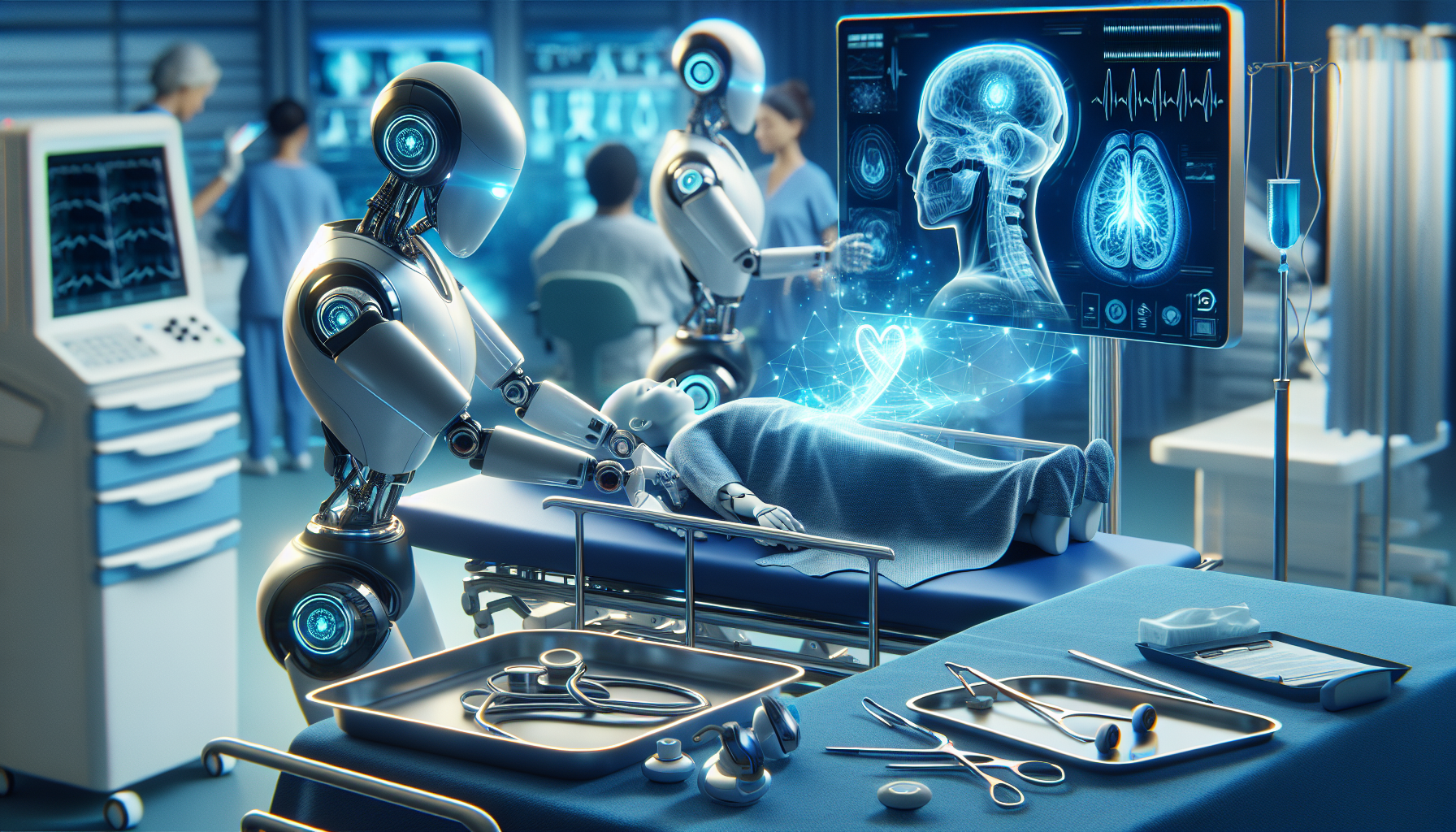Robots in Health Care: Remarkable Advances
Transformative Surgical Robots
Surgical robots have become essential tools in modern operating rooms. One of the most recognized systems is the da Vinci Surgical System, which allows surgeons to perform minimally invasive procedures with unparalleled precision. This robotic platform translates the surgeon’s hand movements into smaller, more precise movements of tiny instruments inside the patient’s body.
Enhanced Precision and Visualization
One of the key advantages of surgical robots is their ability to provide enhanced visualization. Equipped with high-definition cameras and 3D imaging, these robots allow surgeons to see the surgical site in remarkable detail. This added depth perception and clarity can significantly improve surgical outcomes and reduce the risk of complications.
Minimally Invasive Techniques
Robotic-assisted surgeries often result in smaller incisions, leading to less pain, reduced scarring, and faster recovery times for patients. With techniques like robot-assisted prostatectomies and hysterectomies becoming more commonplace, patients can benefit from quicker returns to their daily activities and lower hospital stays.
Robots in Rehabilitation
Rehabilitation is another area where robotic technology has made huge strides. Robotic exoskeletons and rehabilitation robots are being employed to assist patients recovering from strokes, spinal cord injuries, and other debilitating conditions.
Robotic Exoskeletons
Robotic exoskeletons have sprung to life, offering hope to millions. These wearable robotic devices assist individuals with mobility impairments to stand and walk again. By using sensors and motors, exoskeletons adapt to the user’s movements, enabling them to regain mobility and improve their quality of life.
Feedback and Adaptation
Most rehabilitation robots come equipped with advanced feedback systems that analyze the patient’s performance and provide real-time adjustments. This customization ensures that the therapy is correctly tailored to the individual’s needs, enhancing both efficacy and motivation.
Automation in Diagnostics
Robots are not just limited to surgery and rehabilitation; their role in diagnostics is gaining momentum as well. Automated systems are designed to assist with tasks such as blood sample analysis, radiology, and even pathology.
Pathology Robots
Pathology robots can sort and analyze thousands of tissue samples efficiently, significantly speeding up the diagnostic process. These robots can quickly identify cancerous cells or other abnormalities, improving the accuracy and speed of diagnoses.
AI Integration for Enhanced Diagnostics
With the integration of artificial intelligence, diagnostic robots can learn from vast amounts of data, continually improving their accuracy and reliability. They analyze patterns, aiding healthcare professionals in making informed decisions based on comprehensive data, which helps in early disease detection.
Challenges Facing Robots in Health Care
Despite the numerous advantages, the implementation of robots in health care is not without challenges. The journey toward fully integrating robotic technology into health care practices faces several hurdles.
High Costs of Implementation
The installation of sophisticated robotic systems can be prohibitively expensive. From purchasing surgical robots to maintenance and training, costs accumulate quickly, posing a financial burden for many healthcare facilities.
Lack of Cost-Effectiveness
While robotic assistance can yield better patient outcomes, healthcare providers must weigh these benefits against the costs. In certain cases, traditional methods may be more cost-effective and accessible, leading to skepticism about investing in robotic solutions.
Training and Skill Gaps
Another substantial challenge is the need for specialized training. Surgeons and medical personnel must acquire the necessary skills to operate and work alongside robotic systems effectively. The learning curve can be steep, and not all medical professionals may have access to comprehensive training programs.
Ongoing Education Needs
Continued education and training are essential to ensure that health care teams keep up with technological advancements. Investing in ongoing education requires time and resources that can be difficult to prioritize in a busy medical environment.
Regulatory Hurdles
The regulatory landscape for robotic technology in health care is complex. The path to approval for new devices and systems is often lengthy, requiring rigorous testing and compliance with safety standards. Delays in regulatory approval can slow down the introduction of beneficial technologies in the market.
Patient Safety and Ethical Concerns
Concerns about patient safety and ethics also arise with the use of robotic systems. Questions about data privacy, the reliability of robotic decision-making, and the potential for reduced human oversight can create resistance among both healthcare professionals and patients.
Integration with Existing Systems
Integrating new robotic technologies with existing healthcare systems presents another obstacle. Seamless integration is crucial to ensure that these systems enhance rather than disrupt workflows. Compatibility issues between robotic systems and electronic health records can create frustration for users.
Collaboration Among Medical Teams
Successful integration requires collaboration among clinical staff, IT experts, and robotic engineers. Open communication and teamwork are essential to troubleshooting problems and maximizing the benefits of robotic technology in health care delivery.
The Future of Robots in Health Care
As technology advances, the role of robots in health care is expected to expand even further. Innovations in artificial intelligence, machine learning, and robotics will likely lead to improved precision, greater accessibility, and enhanced patient outcomes.
Continuous Improvements
Ongoing research and development in robotics technology promise to create even more sophisticated tools for surgeons, physical therapists, and healthcare professionals. Future robots may combine features from various disciplines, opening doors to novel applications in patient care.
Patient-Centric Design
Advancements will also likely focus on patient-centric design, making robotic solutions more adaptable to individual patient needs and conditions. Engaging patients in the design process can foster trust and enthusiasm towards robotic-assisted therapies.
Increased Accessibility
The future may also bring about increased accessibility to robotic technologies, especially in remote and underserved areas. Mobile robotic systems and telemedicine could bridge the gap among patients who may not have immediate access to advanced treatment options.
By leveraging the potential of robotic technology, healthcare can transition toward a more efficient, patient-centered future that emphasizes precision, personalization, and improved outcomes.
